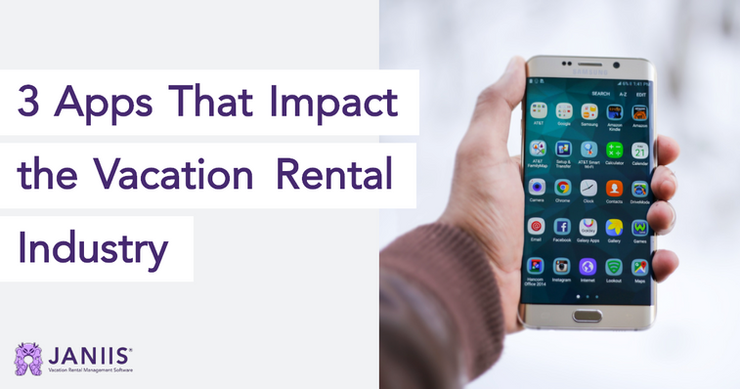The vacation rental industry is growing at a blistering rate. Though many factors are at play, it’s important to not just look internally, but externally for possible context. One massive item that’s changed both behavior & expectations? APPS. Here are three that are used almost everyday, and that impact your vacation rental business.
1) Tinder


Twenty years ago, online dating was all but taboo. You’ve Got Mail was the first of its kind, with Tom Hanks and Meg Ryan chastely swapping AOL messages back and forth. Websites designed to connect people sprung up, starting with Match.com, and followed by still popular sites eHarmony, Plenty of Fish, and OkCupid. Tinder, however, changed the game. For the first time you had a dating app not centered on description and content; but on aesthetic. Both parties have to swipe right (indicating mutual attraction) before the option is given to communicate with one another.
The same philosophy applies to vacation rentals. When was the last time a listing was booked based on a description? The first thing anyone looks at when they’re thinking about staying at a property is the photos. If they’re attracted to the space, then they start scrolling though the description for more details. Apps are cementing behavior which makes high quality pictures absolutely essential.
2) Venmo

To talk about Venmo, we first have to talk about PayPal. Established in 1998, then merging with X.com, PayPal emerged in 2002 as one of the premier money transferring services. That status was cemented via acquisition by eBay for $1.5 billion. Venmo was established in 2009 as a way for friends and later co-founders Kortina and Magdon-Ismail to easily split bills and send funds back and forth. It was first acquired by BrainTree in 2012 for $26.2 million, and then BrainTree was snapped up by PayPal for $800 million in 2013.
What is interesting, is that Venmo and PayPal are incredibly similar. A few key differences: Venmo is free to use, while PayPal charges 2.9% + $0.30 when used in conjunction with debit or credit cards. Venmo’s brand perception is also “cooler”. They cater to completely different demographics. They understand who their target customer is, and nail it as far as marketing to them.
How does this apply to your vacation rentals? Knowing what vibe your property has, and then marketing correctly to that audience is crucial. A house next to a golf course, and a beach apartment in Cancun, are going to attract completely different people. Another necessity is having a way to process cards. Near instantaneous money transfers are now the norm; if that feature isn’t available, it’s detrimental to the booking process.
3) Lyft

Rideshare apps like Uber & Lyft revolutionized transportation- to the point where taking a cab now feels like a ripoff. In the same vein of PayPal/Venmo, Uber & Lyft are essentially the same thing, but again the key difference between the two is personality. Uber is billed as more driver/passenger stringent. The driver picks the passenger up, the passenger sits in the back, and there’s little talk. Lyft, on the other hand, is much more organic. They want to facilitate a sense of community. People are encouraged to sit up front, to talk with their drivers, to make connections. In a time where it’s crucial to consider folksonomy, Lyft injected an organic, authentic presence into the market.
The desire for personal connection is an enormous driving (see what we did there) factor within the vacation rental industry as well. In the way that Lyft added a personal touch to transportation, vacation rentals do the same for travel lodging. Staying in a vacation rental is more comfortable, real, and friendly- and that’s a strength that should be amplified and capitalized on.
Liked this post? Check out this one about 5 Things to Know About Vacation Rental Software, or How to Negotiate Owner Contracts.
#industryresources #listingtips #vacationrentalindustry

